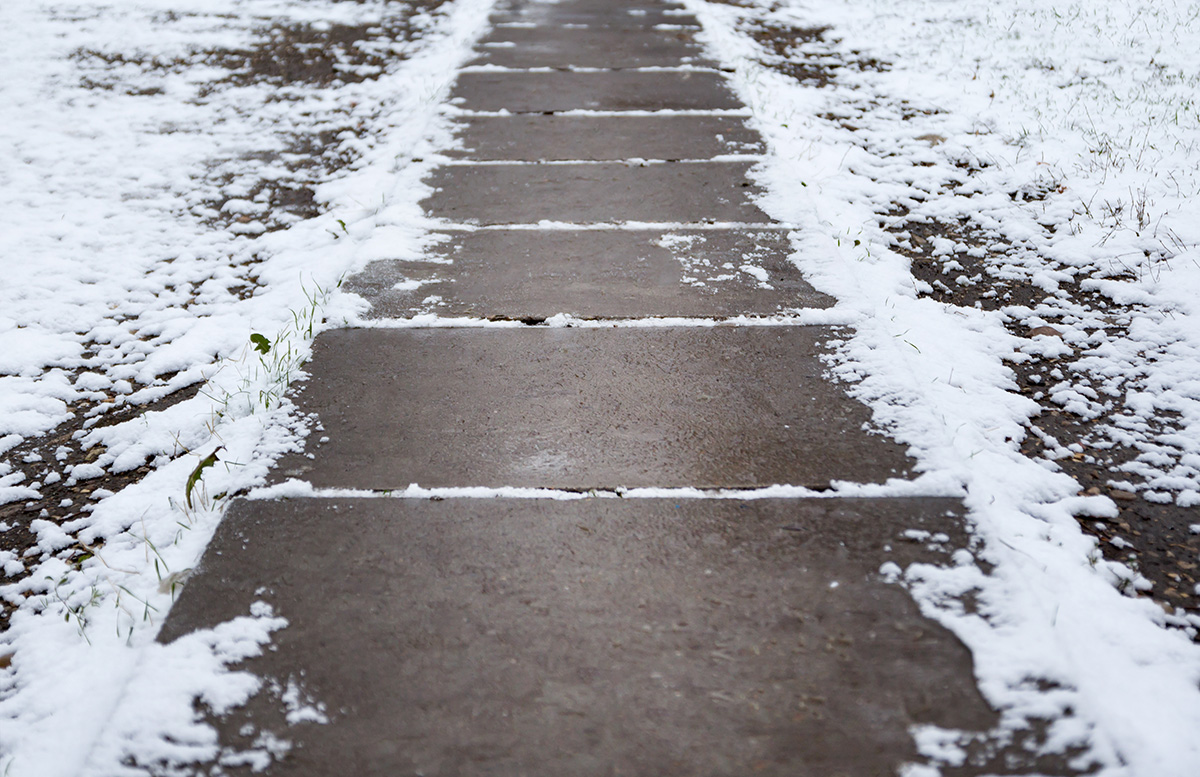
Drexel University engineers have shown that a concrete mix designed to
gently warm itself in cold weather can cut damaging freeze-thaw cycles
outdoors, pointing to longer-lasting pavements for cold climates. Led by the
College of Engineering’s
Advanced Infrastructure Materials Lab, the study validates performance outside the lab in Philadelphia winters
and advances the team’s self-heating, de-icing concrete.
The researchers compared two ways of adding low-temperature phase-change
material to concrete. In one mix, liquid paraffin is drawn into the pores of
lightweight aggregate so each stone acts like a small heat battery. In the
other, paraffin is sealed inside microscopic polymer capsules and blended
into concrete, creating a quicker heat pulse that tapers sooner.
“When we load paraffin into porous lightweight aggregate, the pores act like
micro-reservoirs,” said
Amir Farnam, PhD, professor of civil, architectural and environmental engineering, who leads
the lab. “That pore confinement lets the paraffin stay liquid a few degrees
below its usual solidifying point due to capillary pressure phenomenon, so
it releases heat gradually over several hours instead of all at once. That
broader window is what suppresses the freeze-thaw cycling we see in ordinary
slabs.”
The team monitored outdoor test slabs across multiple winters and ran
matching environmental-chamber trials. The porous aggregate mix consistently
held its surface a few degrees above freezing during cooling periods and
began melting light snowfall as it formed. The microcapsule mix produced a
shorter, sharper rise near the transition temperature.
“Real pavements never see neat, repeatable temperature ramps,” said
Sharaniya Visvalingam, a doctoral candidate and co-author who helped lead
instrumentation and data analysis. “In our field data, the aggregate-based
phase-change material responded earlier during falling temperatures and held
the surface a few degrees above freezing for hours. Keeping that cushion
reduces the freeze-thaw swings that start tiny cracks and invite water in.”
Durability results point to the same direction. Specimens with phase-change
material in the aggregate took up water more slowly and maintained a lower
overall moisture level than the reference and microcapsule mixes. Mechanical
tests showed strengths on par with conventional concrete for the aggregate
mix.
“For the public, the promise is straightforward,” said co-author Robin Deb.
“Pavements that stay just warm enough during minor snow and cold snaps can
reduce ice formation, cut the need for salt, and keep roads and sidewalks in
better shape through winter. That means safer travel and fewer disruptive
repairs. Additionally, keeping the moisture away from concrete will improve
pavement durability in cold climate in a long run, adding many more years of
promising functionalities to the pavement.”
The researchers note that performance depends on local weather and on the
material recharging between cold events. Ongoing monitoring will refine
design targets and optimize concrete properties, including how much
phase-change material to use and how best to integrate it with standard
paving practices.
This work advances Drexel’s effort to engineer infrastructure materials that
actively manage their environment, building on
earlier campus trials
while focusing on field durability and mix strategies suitable for
deployment.
Read the full paper: https://link.springer.com/article/10.1007/s42947-025-00640-2